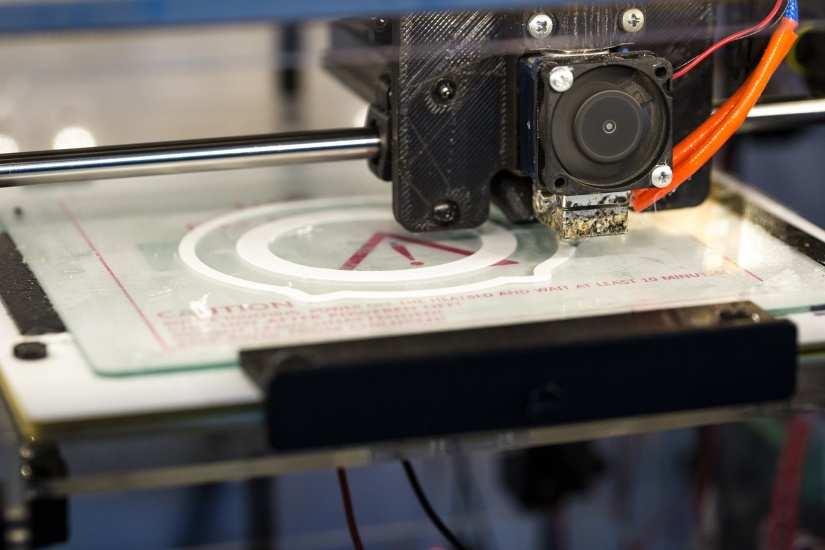Basic Doesn't Mean Bad - Why Easy Maker Projects Rock
Blinking an LED with an Arduino. Running RetroPie on a Raspberry Pi. Installing Kodi on a single-board computer. These are all pretty easy maker projects. But basic doesn't mean bad. In fact, beginner-friendly do-it-yourself (DIY) projects provide an accessible means of getting hands-on with new technology. Here's why basic projects are actually awesome.
Instant Gratification

Regardless of experience level, learning a new maker skill can be pretty tough. That could be starting out with a fresh piece of hardware such as a Raspberry Pi or Arduino, testing out a new skill such as soldering or 3D printing, and even proceeding to more advanced projects within an existing space. Starting out with a simple, straightforward challenge often proves extremely rewarding and encouraging. For instance, blinking an LED using an Arduino isn't terribly difficult especially once you've performed it and have a solid understanding of microcontroller hardware as well as how it interacts with the IDE (integrated development environment). However, before you've reached that point, even a few lines of code in an Arduino IDE may seem intimidating.
Make Something Cool, Unleash Potential

A powerful quality of simple DIY projects is its ability to showcase the potential of some hardware or software. I still remember my first Raspberry Pi project. Adhering to the cliche, it was a retro gaming console with RetroPie. I then proceeded to test out Recalbox and OSMC (Open-Source Media Centre). While the Pi intrigued me, I was just as keen if not more so, on getting my Raspberry Pi so I could use its multi-colored Pibow case.
Yet all of that changed once I actually completed a project. Sure, cobbling together a retro game console was as easy as flashing an operating to a microSD card, booting up my Pi, and mapping some buttons. Along the way, I learned quite a bit though. Previously, I'd yet to use SSH, and transferring ROMs required using SFTP to remotely drop files onto my Pi. Likewise, my Kodi home theatre PC with OSMC wasn't anything particularly fancy. But accessible projects such as those further sparked my interest in the Pi, and I quickly became curious about what else it could do. Since then, I've used Pi boards to create a whole-home ad-blocking device with Pi-Hole, whipped up a VPN server, controlled my 3D printers using OctoPrint, and even run a Plex server with a Pi. Witnessing what seemed like magic in that first RetroPie splash screen back in the day helped me realize the potential of the Pi.
Iterative Learning

Learning never stops, and I'm of the opinion that if you're not learning you're not paying attention. This is possibly never more true than in the maker community. Often, projects never finish. We simply take breaks from working on them. Take my first RetroPie project for instance. Since then, I've upgraded to a Raspberry Pi 3 B+ and will undoubtedly transfer that over to a Pi 4 once there's a stable official image. While it's still an emulation console, the hardware and software powering it has evolved.
Similarly, my maker skillset evolved along the way. I began learning about the command line and Linux. Over time, I became comfortable with the Raspberry Pi, and picked up an Arduino. Sure, a microcontroller and single-board computer are different, yet enough overlap exists that I shouldn't have been nervous. But I was. Like I did with my Raspberry Pi, I started small, this time with the goal of blinking an LED. First I learned to blink an LED once, then to make it blink repeatedly. And I understood not only how to perform this, but why it happens too. At the time, I never believed I'd go on to put together an Arduino-powered smart plant watering system.
Expand Your Horizons

When I initially began DIYing, I was drawn to the Raspberry Pi as a gamer and home theatre enthusiast. Having heard about its abilities to tackle those tasks, I snagged a Pi. Scouring forums and joining various Pi-based communities, I soon discovered other cool projects that fellow makers had built. The Pi led me to Arduino tinkering, 3D printing, and even a bit of soldering though I'm still not terribly comfortable armed with a soldering iron. My non-maker interests brought me to DIY tech which then knocked me down the hobbyist rabbit hole.
Build Yourself Increasingly Cool Stuff

One of the best qualities of the maker space is that, through continued education, we can build ourselves useful, functional items and thereby eliminate the need to purchase off-the-shelf devices sometimes. Rather than buying a network-attached storage (NAS) device, I've used maker boards, a cost-effective solution. Over time, my DIY capabilities have increased, and so too has my output of maker projects to fulfill needs around my house.
Basic Doesn't Mean Bad - Why Simple DIY Projects are Awesome
Whether you've never dabbled in tech before or you're a seasoned enthusiast learning a new skill, starting with easy projects isn't anything to be ashamed of. Moreover, don't be afraid to document and share your simple DIYing, both successes and failures alike. When following along with tutorials, you've got an opportunity to customize and add to it. Add a little code to that Arduino code you copied into the IDE, for instance. We all start somewhere, and those small wins at the beginning of a maker journey go a long way towards encouraging and empowering us.
Benefits of easy maker projects:
- Gratifying
- Safe place to start
- Encouraging and empowering
- Expand our horizons
- Iterative learning
Your turn: What beginner-friendly maker projects have you completed, and how has your DIY journey evolved?










































Leave your feedback...